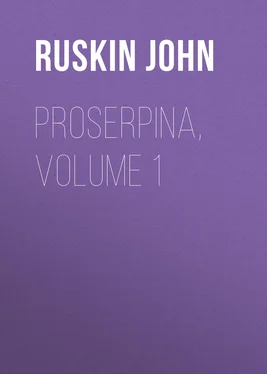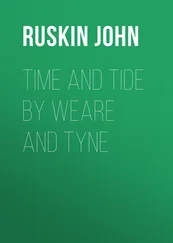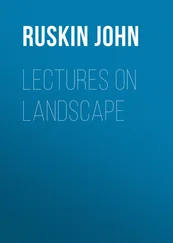John Ruskin - Proserpina, Volume 1
Здесь есть возможность читать онлайн «John Ruskin - Proserpina, Volume 1» — ознакомительный отрывок электронной книги совершенно бесплатно, а после прочтения отрывка купить полную версию. В некоторых случаях можно слушать аудио, скачать через торрент в формате fb2 и присутствует краткое содержание. Жанр: foreign_antique, Биология, literature_19, foreign_edu, на английском языке. Описание произведения, (предисловие) а так же отзывы посетителей доступны на портале библиотеки ЛибКат.
- Название:Proserpina, Volume 1
- Автор:
- Жанр:
- Год:неизвестен
- ISBN:нет данных
- Рейтинг книги:3 / 5. Голосов: 1
-
Избранное:Добавить в избранное
- Отзывы:
-
Ваша оценка:
- 60
- 1
- 2
- 3
- 4
- 5
Proserpina, Volume 1: краткое содержание, описание и аннотация
Предлагаем к чтению аннотацию, описание, краткое содержание или предисловие (зависит от того, что написал сам автор книги «Proserpina, Volume 1»). Если вы не нашли необходимую информацию о книге — напишите в комментариях, мы постараемся отыскать её.
Proserpina, Volume 1 — читать онлайн ознакомительный отрывок
Ниже представлен текст книги, разбитый по страницам. Система сохранения места последней прочитанной страницы, позволяет с удобством читать онлайн бесплатно книгу «Proserpina, Volume 1», без необходимости каждый раз заново искать на чём Вы остановились. Поставьте закладку, и сможете в любой момент перейти на страницу, на которой закончили чтение.
Интервал:
Закладка:
There is nothing I have more intended to know—some day or other. But the moss 'would always be there'; and then it was so beautiful, and so difficult to examine, that one could only do it in some quite separated time of happy leisure—which came not. I never was like to have less leisure than now, but I will know what moss is, if possible, forthwith.
2. To that end I read preparatorily, yesterday, what account I could find of it in all the botanical books in the house. Out of them all, I get this general notion of a moss,—that it has a fine fibrous root,—a stem surrounded with spirally set leaves,—and produces its fruit in a small case, under a cap. I fasten especially, however, on a sentence of Louis Figuier's, about the particular species, Hypnum:—
"These mosses, which often form little islets of verdure at the feet of poplars and willows, are robust vegetable organisms, which do not decay." 5 5 "Histoire des Plantes." Ed. 1865, p. 416.
3. "Qui ne pourrissent point." What do they do with themselves, then?—it immediately occurs to me to ask. And, secondly,—If this immortality belongs to the Hypnum only?
It certainly does not, by any means: but, however modified or limited, this immortality is the first thing we ought to take note of in the mosses. They are, in some degree, what the "everlasting" is in flowers. Those minute green leaves of theirs do not decay, nor fall.
But how do they die, or how stop growing, then?—it is the first thing I want to know about them. And from all the books in the house, I can't as yet find out this. Meanwhile I will look at the leaves themselves.
4. Going out to the garden, I bring in a bit of old brick, emerald green on its rugged surface, 6 6 The like of it I have now painted, Number 281, Case xii., in the Educational Series of Oxford.
and a thick piece of mossy turf.
First, for the old brick: To think of the quantity of pleasure one has had in one's life from that emerald green velvet,—and yet that for the first time to-day I am verily going to look at it! Doing so, through a pocket lens of no great power, I find the velvet to be composed of small star-like groups of smooth, strong, oval leaves,—intensely green, and much like the young leaves of any other plant, except in this;—they all have a long brown spike, like a sting, at their ends.

Fig. 1.
5. Fastening on that, I take the Flora Danica, 7 7 Properly, Floræ Danicæ, but it is so tiresome to print the diphthongs that I shall always call it thus. It is a folio series, exquisitely begun, a hundred years ago; and not yet finished.
and look through its plates of mosses, for their leaves only; and I find, first, that this spike, or strong central rib, is characteristic;—secondly, that the said leaves are apt to be not only spiked, but serrated, and otherwise angry-looking at the points;—thirdly, that they have a tendency to fold together in the centre (Fig. 1 8 8 Magnified about seven times. See note at end of this chapter.
); and at last, after an hour's work at them, it strikes me suddenly that they are more like pineapple leaves than anything else.
And it occurs to me, very unpleasantly, at the same time, that I don't know what a pineapple is!
Stopping to ascertain that, I am told that a pineapple belongs to the 'Bromeliaceæ'—(can't stop to find out what that means)—nay, that of these plants "the pineapple is the representative" (Loudon); "their habit is acid, their leaves rigid, and toothed with spines, their bracteas often coloured with scarlet, and their flowers either white or blue"—(what are their flowers like?) But the two sentences that most interest me, are, that in the damp forests of Carolina, the Tillandsia, which is an 'epiphyte' ( i.e. , a plant growing on other plants,) "forms dense festoons among the branches of the trees, vegetating among the black mould that collects upon the bark of trees in hot damp countries; other species are inhabitants of deep and gloomy forests, and others form, with their spring leaves, an impenetrable herbage in the Pampas of Brazil." So they really seem to be a kind of moss, on a vast scale.
6. Next, I find in Gray, 9 9 American,—'System of Botany,' the best technical book I have.
Bromeliaceæ, and—the very thing I want—"Tillandsia, the black moss , or long moss, which, like most Bromelias , grows on the branches of trees." So the pineapple is really a moss; only it is a moss that flowers but 'imperfectly.' "The fine fruit is caused by the consolidation of the imperfect flowers." (I wish we could consolidate some imperfect English moss-flowers into little pineapples then,—though they were only as big as filberts.) But we cannot follow that farther now; nor consider when a flower is perfect, and when it is not, or we should get into morals, and I don't know where else; we will go back to the moss I have gathered, for I begin to see my way, a little, to understanding it.
7. The second piece I have on the table is a cluster—an inch or two deep—of the moss that grows everywhere, and that the birds use for nest-building, and we for packing, and the like. It is dry, since yesterday, and its fibres define themselves against the dark ground in warm green, touched with a glittering light. Note that burnished lustre of the minute leaves; they are necessarily always relieved against dark hollows, and this lustre makes them much clearer and brighter than if they were of dead green. In that lustre—and it is characteristic of them—they differ wholly from the dead, aloe-like texture of the pineapple leaf; and remind me, as I look at them closely, a little of some conditions of chaff, as on heads of wheat after being threshed. I will hunt down that clue presently; meantime there is something else to be noticed on the old brick.

Fig. 2.
8. Out of its emerald green cushions of minute leaves, there rise, here and there, thin red threads, each with a little brown cap, or something like a cap, at the top of it. These red threads shooting up out of the green tufts, are, I believe, the fructification of the moss; fringing its surface in the woods, and on the rocks, with the small forests of brown stems, each carrying its pointed cap or crest—of infinitely varied 'mode,' as we shall see presently; and, which is one of their most blessed functions, carrying high the dew in the morning; every spear balancing its own crystal globe.
9. And now, with my own broken memories of moss and this unbroken, though unfinished, gift of the noble labour of other people, the Flora Danica, I can generalize the idea of the precious little plant, for myself, and for the reader.
All mosses, I believe, (with such exceptions and collateral groups as we may afterwards discover, but they are not many,) that is to say, some thousands of species, are, in their strength of existence, composed of fibres surrounded by clusters of dry spinous leaves, set close to the fibre they grow on. Out of this leafy stern descends a fibrous root, and ascends in its season, a capped seed.
We must get this very clearly into our heads. Fig. 2, A, is a little tuft of a common wood moss of Norway, 10 10 'Dicranum cerviculatum,' sequel to Flora Danica, Tab. MMCCX.
in its fruit season, of its real size; but at present I want to look at the central fibre and its leaves accurately, and understand that first.
10. Pulling it to pieces, we find it composed of seven little company-keeping fibres, each of which, by itself, appears as in Fig. 2, B: but as in this, its real size, it is too small, not indeed for our respect, but for our comprehension, we magnify it, Fig. 2, C, and thereupon perceive it to be indeed composed of, a , the small fibrous root which sustains the plant; b , the leaf-surrounded stem which is the actual being, and main creature, moss; and, c , the aspirant pillar, and cap, of its fructification.
Читать дальшеИнтервал:
Закладка:
Похожие книги на «Proserpina, Volume 1»
Представляем Вашему вниманию похожие книги на «Proserpina, Volume 1» списком для выбора. Мы отобрали схожую по названию и смыслу литературу в надежде предоставить читателям больше вариантов отыскать новые, интересные, ещё непрочитанные произведения.
Обсуждение, отзывы о книге «Proserpina, Volume 1» и просто собственные мнения читателей. Оставьте ваши комментарии, напишите, что Вы думаете о произведении, его смысле или главных героях. Укажите что конкретно понравилось, а что нет, и почему Вы так считаете.












